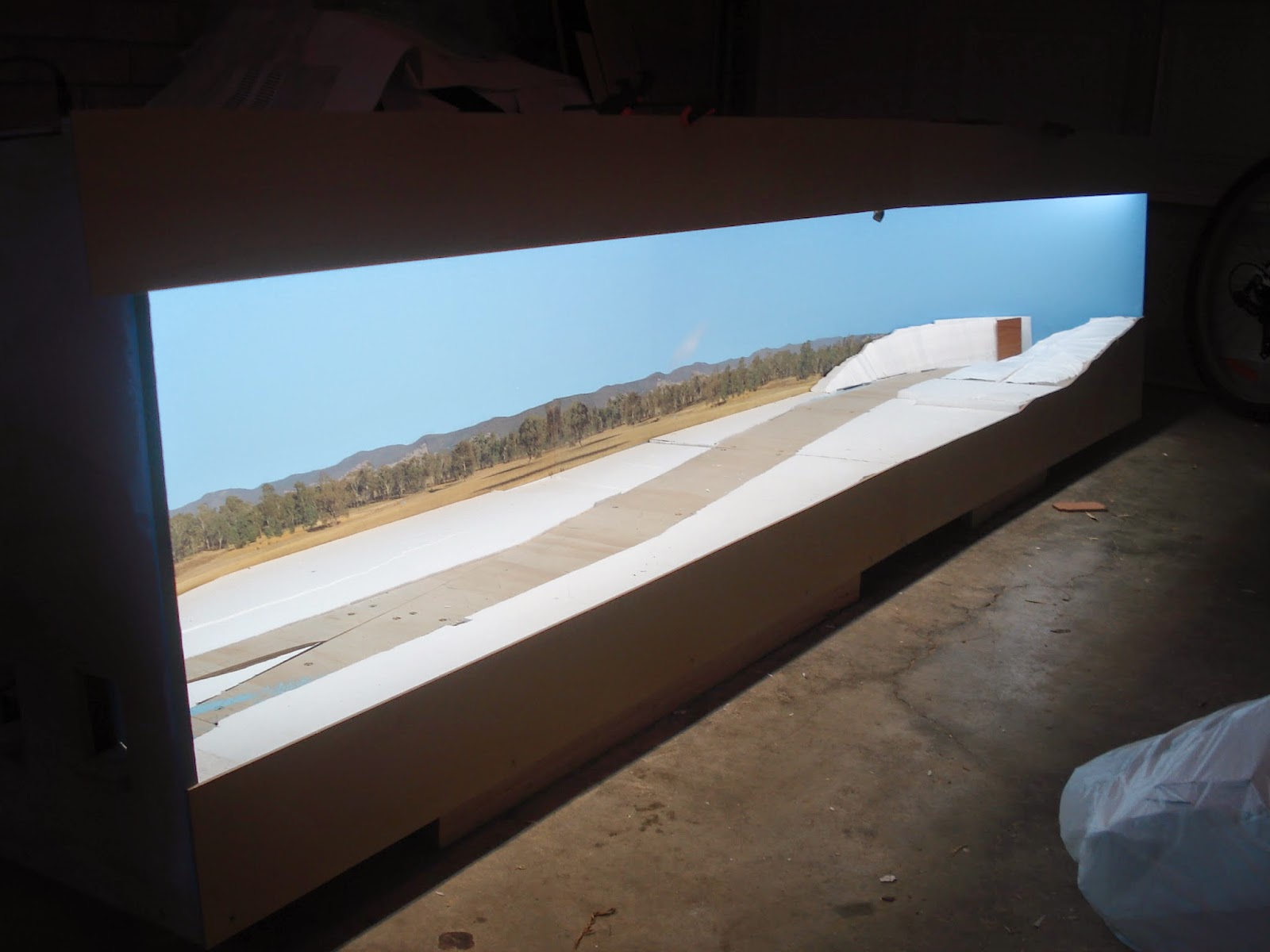Today I got the traverser up onto its legs. Most of the
designs you see in this blog I’ve replicated and reverse-engineered from pictures
on various people’s blogs. The design for the legs is no different, and
although I can’t actually remember which of the many rail forums I saw this idea in, I’ll explain it in a little detail.
Nearly all of the components are built from 42mm x 18mm
dressed-all-round (DAR) pine. Exceptions are listed further down.
As the whole layout has to be portable, I needed the legs to
be removable. The legs attach to the traverser module through guides which are
covered with a 3mm MDF stay. Because I built the guides independently of the
traverser design, the screws holding the stays also keep the guides attached
to the module.
A 150mm-long piece of 30mm x 30mm DAR timber is attached to
the bottom of each leg. At the base of this timber I drilled out a depth of
around 25mm and slotted in an M10-thread T-nut. A plastic furniture foot screw
with appropriate thread screws into this, giving each leg adjustable height.
I also built a shelf from the leftover timber and MDF, which
rests on top of the lower DAR timbers and keeps the legs braced at the bottom.
My track height is around 1400mm off the ground, so until I attach some
diagonal bracing to the top of the layout it has a pretty solid wobble.
For the first few days after I finished work for the year it
rained. This made the humidity in the garage too uncomfortable to start the
traverser legs. Determined to do something train-related, I grabbed my Columbia
Models 1971 BCW and the Tamiya weathering powders I've had sitting around for a
while and had a go. I've detailed this wagon as per Ray Zhu's
article in the February 2013 AMRM, and made a few other additions in underframe
detail, new roof made from a venetian blind and added brackets for the
uncoupling levers.
I used Pack B of the Tamiya weathering powders. I'm
not overly impressed with them - the sponge applicator started to degrade
before I'd completed the third side. I’m still not satisfied with the roof – it
needs more of a red rust colour – but the sides came out well. I shared
this photo with another modelling group on Facebook, where a number of modellers pointed out
that I hadn’t painted the wheels. There’s another skill to learn! As much as I’d
like I can’t say the BCW is finished yet, but it’s certainly coming along. Having read an article on weathering cement hoppers with powders in Model Railroader, I'm keen to try out the 'snow' colour in this pack on my PCC hoppers along with a HB pencil to replicate the weld lines, but that's another rainy day project.
I’ve undercoated the NRY, but that’s going to have to wait until after the next round of the season’s festivities tomorrow night.
Lastly, I hope you’ve enjoying reading these pages this year. I mainly pursue the hobby outside of a club or a regular group of modellers, so your comments and suggestions have been much appreciated.
Here’s to running trains in 2015!
Cheers,
Ben
































.JPG)
.JPG)
.JPG)
.JPG)
.JPG)
.JPG)
.JPG)
.JPG)
.JPG)
.JPG)





